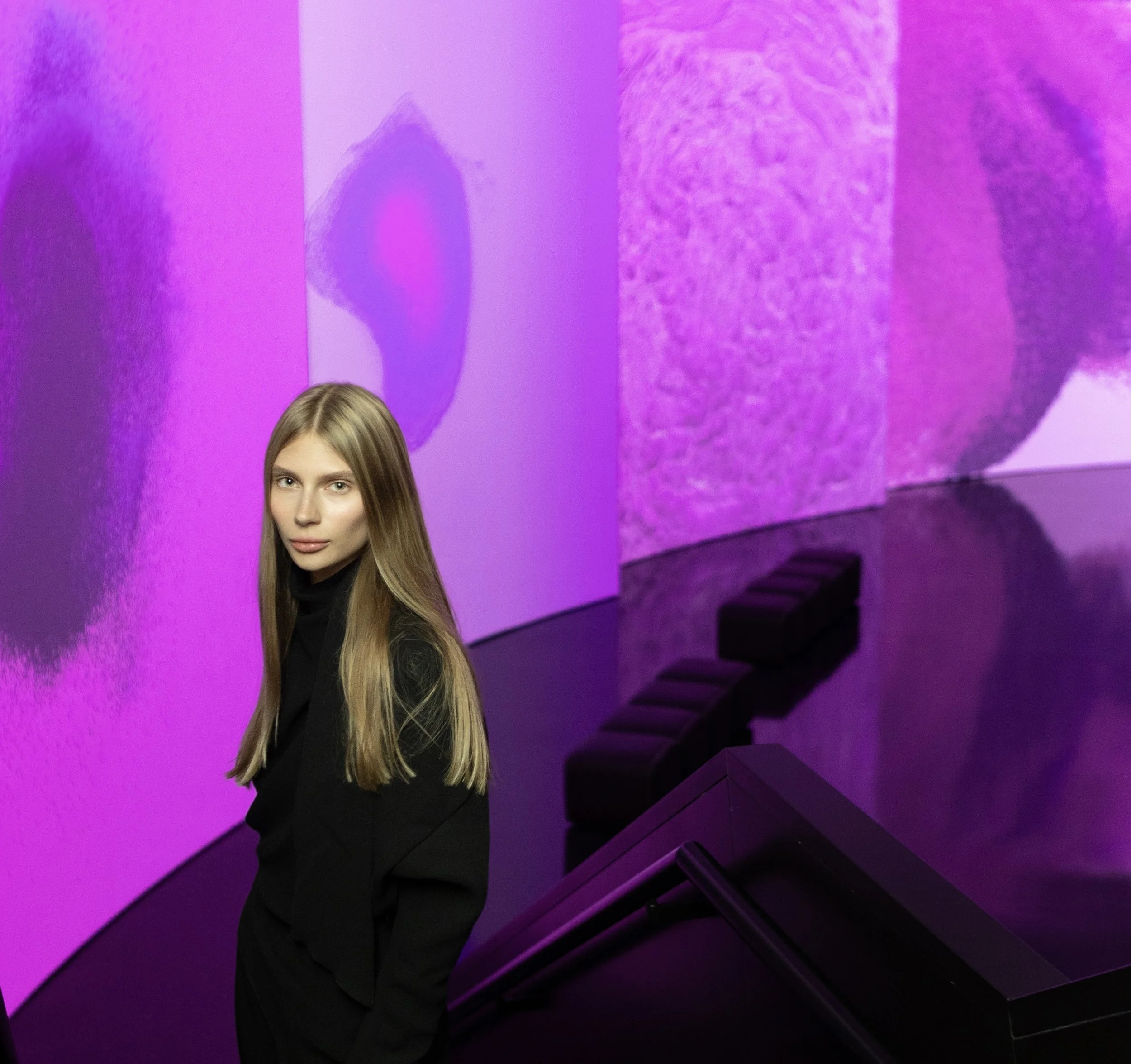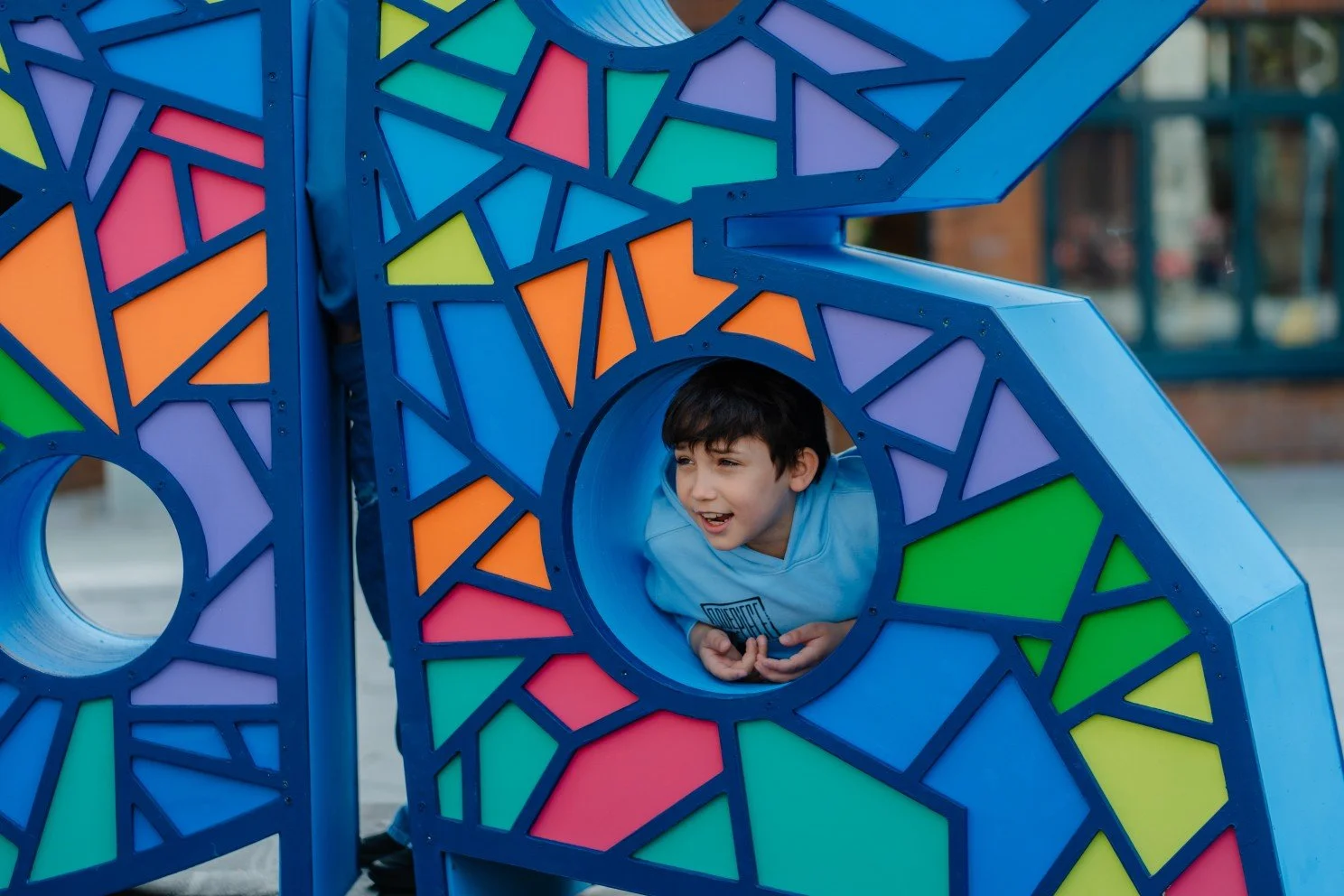INTERVIEW | Laura Mirarchi
10 Questions with Laura Mirarchi
Laura Mirarchi is an Italian artist currently based in Florence. Her works are based on experimentation with different mediums with an emphasis on the visual and narrative aspects.
In her current participatory project in GlogauAIR, she examined through photography and video the feeling of struggle to find a real connection and the contrast between what is visible and what is not. To highlight the concept, she worked with some materials, such as cellophane, as a filter to overlay the images playing on the ambiguity of these.
Laura Mirarchi - Portrait
ARTIST STATEMENT
Her research explores the individual and questions of identity and political and cultural differences in our fragmented and contradictory society.
To present her concept in a visual form, she makes use of different media, such as painting, drawing, and printmaking. More recently, she has approached the installation by working with hybrid materials to create sculptural elements.
Treating the figure as a motif of flowing forms, the purpose is to invite the viewer to wonder about what they see and experience in this space, which opens up different perspectives and meanings.
Currently, her research focuses on this question: "in a time when we are overwhelmed by an abuse of images and consumption, how can we preserve our personal integrity?"
To scratch that surface and catch that complexity, she's exploring, through a mixed-media approach, this tension between the need to be constantly connected and the sense of loss and loneliness that comes from the inability to find a balance between those poles.
Laura Mirarchi at work
INTERVIEW
Could you tell us a little more about your background and how you first got interested in making art?
My background is quite eclectic, as are my interests. When I decided to go to university, I was worried about studying art because in my country, although historically rich in culture and art, being an artist and living with art is very complicated, and I'd say almost impossible.
Then I thought of studying something that could guarantee me a suitable job. For a long time, art was marginal in my life. It was more of a passion to be cultivated in my spare time. I realized very late that art is an important part of my life.
After a special meeting with an artist, I understood what my potential was and that I needed to do more. So I started working in a different way, not only for myself but also considering the possibility of showing my work to other people and that it could have an impact on them.
You studied Communication and Semiotics. What inspired you to pursue a career in art?
I am happy with my studies because they allowed me to develop and cultivate critical thinking. Those years were important to understanding and improving myself in many ways. Through this complicated journey, I gained greater awareness and the strength to feel free to pursue an artistic career. This was something that was already in me, but I had to go down other paths before.
What is your personal aim as an artist?
I think that when you make art and enter a certain system, the hardest thing to do is to be honest with yourself and what you are doing. For me, the main goal is to stay as true as possible to my values and, through my way of experiencing the world and its things, bring them back in a new light that is understandable to others.
Can you tell our readers what experience of your life is reflected in your works of art?
My art has a strong autobiographical style. In all my works, some elements are related to personal memories and based on a dreamlike vision. There's always something disturbing and sweet at the same time. There is me, the things that happen to me or around me, the people I meet, what I like and what I do not like.
In your work you deal with themes such as identity, political and cultural differences, and social issues. What messages do you want to convey with your art?
I think these issues are very important and closely related. Culture, gender, and politics are who we are. We still live in a very macho and classist world. We are all influenced by superstructures that are hard to knock down because they are so ingrained in us. We often end up losing each other or never meeting each other, living false lives and chasing ideals to later discover that they do not belong to us.
The issue of minorities is even more complex when we consider the daily discrimination that those who are considered deviants from the norm are forced to endure, often with the tacit consent of a system that reinforces barriers instead of breaking them down by appealing to a kind of nationalism and populism that should be outdated by now. The message I would like to convey through my work is that against the ferocity and ruthlessness of this world, it is possible to practice gentleness, kindness, and beauty, using a clearer and more immediate code than spoken language.
Installation, Untitled (some pieces of steel) © Laura Mirarchi
Installation, Untitled (some pieces of steel) © Laura Mirarchi
How has your art evolved over the years?
My art has changed a lot over time. I have a multidisciplinary approach, and I like to work on different levels. My main medium is painting, but recently I have started to work with installations, and my latest work has been a video. I really like to experiment and try new languages. It is always surprising what happens in the process and at the end.
What is the most challenging part of your work?
The beginning of a project is always very chaotic. I usually start with a big concept that includes even bigger ones in a random creative way. I spend a lot of time thinking and writing a few lines or keywords to fix what interests me most. During this process, I change my mind many times, and that is exhausting. But in the end, it's fun to see how the initial random idea has acquired a sense that I hadn't seen before.
Say it Low, 2022 © Laura Mirarchi
“This video is part of an experimental project started during my art residency in GlogauAIR.
During my work, I explored through photography and video the question of identity and how we can preserve our personal integrity at a time when we are overwhelmed by the abuse of images and consumption.
I used some materials, such as cellophane, as a filter to overlay the images as a way to transmit this feeling of struggle to find a real connection and the contrast between what is visible and what is not.
The video is shot entirely in close-up. The narrow framing allows you to capture the details of the scene and the more visual and emotional aspects.
The alternation of black and white with colors marks the transition of time from a more intimate dimension to a more social one, as well as the photos that appear interspersed with flashes and superimposed on the video once again signal a time linked to memory to something still present but elusive.
Although there is no real narration, the sound dictates the rhythm and the sensations that arise from it.
The whole process is inscribed in this material which contains told and related stories.”
— Laura Mirarchi
Say it Low, 2022 © Laura Mirarchi
Where do you find inspiration?
I get inspiration from something I see around me or from a feeling that becomes so intense that it upsets me. So I start to think about how I could transform this feeling or idea and give it a new meaning.
In your opinion, what role does the artist have in society?
The artist is the mirror of society, and in this time of deep and inevitable change, they have the task of shaping it because their role is never separated from the political, cultural, and social process. More than ever nowadays, it would be important to move away from the logic and purely speculative aspects to focus more on the role of a seeker of "truth". That means that they should be just as good at looking inward as they should be at looking outward.
And finally, what are your plans for the future? Any exhibition or project you want to share with us?
I just spent three months in a residency in Berlin. In the final exhibition, I presented my first video, which will be on display until the 3rd of January. In the next months, I will try to focus more on my personal work to figure out what direction I want to take. And maybe by this spring, I will be ready to start another project somewhere.





















